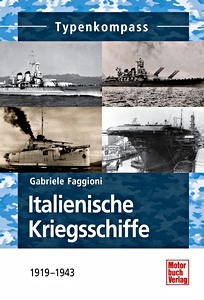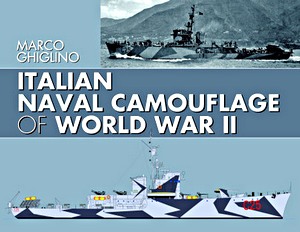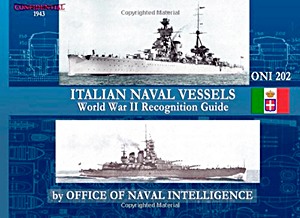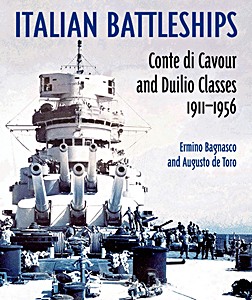Italian Naval Camouflage of World War II
A major new study of Italian naval camouflage schemes developed and used during World War Two. When Italy entered the War in June 1942, the Regia Marina (Italian navy) was a force still under development and both Italian warships and merchant ships faced the War in their peace colours; and nor had any had prewar plans been made for camouflaging ships.
At that time all the principal warships were painted in a light matt grey ('grigio cenerino chiaro'), which had been adopted in the 1920s and early '30s.
With the advent of War, and the start of convoy traffic to Libya, the need to camouflage ships for purposes of deception, rather than outright concealment, became apparent and the first initiatives were undertaken.
In the first part of the book, employing contemporary schematic drawings, photographs and his own CAD profiles, the author describes the development of the varied schemes that were adopted for the capital ships, such as Caio Duilia and Littorio, cruisers, destroyers and torpedo boats, landing craft and merchant ships; even the royal yacht and small tugs were given camouflage schemes.
In the second, and longest, part he depicts all the ships and their schemes, at different dates, with both sides of a ship shown where possible, in his own beautifully rendered schematic profiles, all in full colour, and it is this section with more than 700 drawings that gives the reader a complete and detailed picture of the whole development of Italian naval camouflage.
He also looks in detail at the Greek theatre where there were many exceptions, influenced by the German presence and by the camouflage schemes of captured vessels. T
his major new reference book will prove invaluable to historians, collectors, modelmakers and wargamers and follows in the wake of the hugely successful Seaforth editions covering German and British camouflage schemes of the Second World War.
Details
| Autor: | Marco Ghiglino |
|---|
| Ausführung: | 256 Seiten, 20.5 x 26.5 x 2.5 cm, gebunden |
|---|
| Abbildungen: | 750 farbige und s/w-Abbildungen, Profilzeichungen in Farbe |
|---|
| Verlag: | Pen & Sword Books Ltd (GB, 2018) |
|---|
| ISBN: | 9781526735393 |
|---|
![Seiten aus dem Buch [TK] Italienische Kriegsschiffe 1919-1943 (1)](../afb/details/PP03551.jpg)










